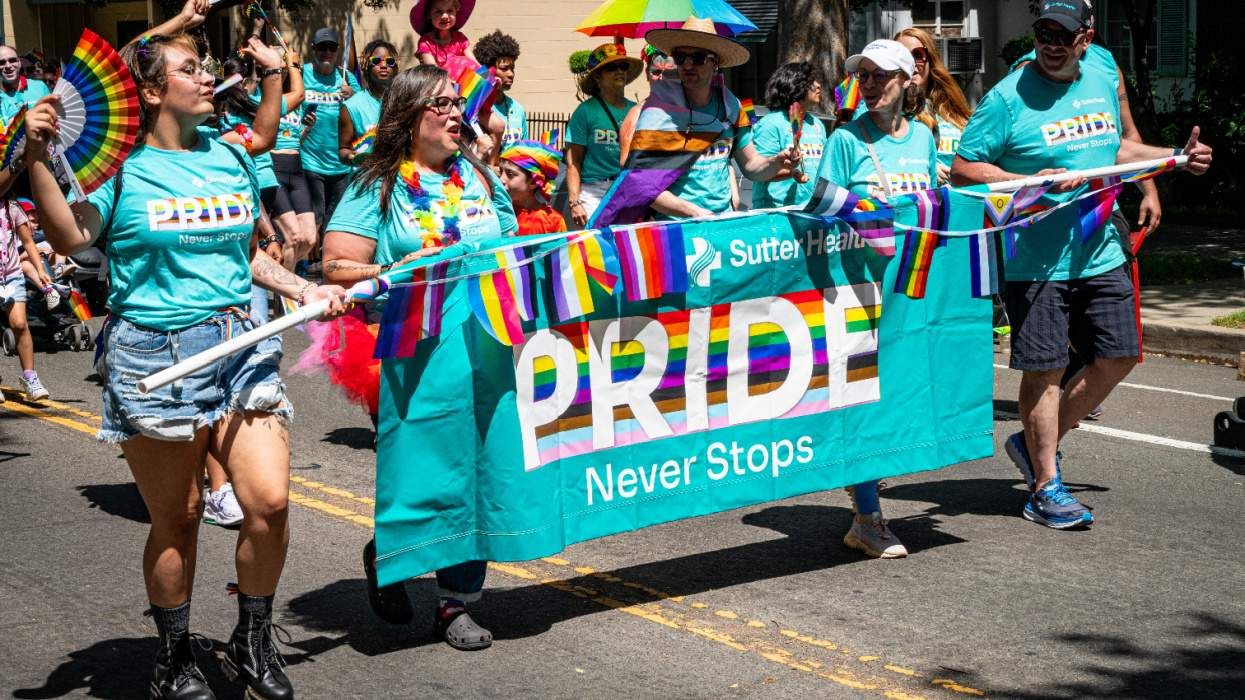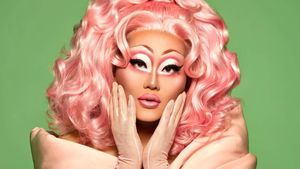From left: The diverse LGBTQ+ candidates elected to office in the past year include State Rep. Stephanie Byers of Kansas, an Indigenous transgender woman; U.S. Rep. Mondaire Jones of New York State, one of two gay Black men elected to Congress; and State Rep. Adrian Tam of Hawaii, an Asian-American gay man and the only out member of the state legislature.
The number of LGBTQ+ Americans in elected office increased greatly in the past year, but the community is still severely underrepresented, according to a new report.
There are 986 known out LGBTQ+ elected officials in the U.S., representing a 17 percent increase in the past year (June 2020 through June 2021), says the LGBTQ Victory Institute's Out for America report, released Wednesday. But that means LGBTQ+ people hold just 0.19 percent of elected positions in the nation, despite making up at least 5.6 percent of the population. That means 28,116 more LGBTQ+ people must be elected to office for the community to be represented in accordance with its proportion of the population.
Still, there was much progress in the past 12 months, which includes a "rainbow wave" last November. LGBTQ+ elected officials of color increased by 51 percent, with the number of Black LGBTQ+ elected officials growing the most, a 75 percent increase. This includes the first two Black gay members of the U.S. House of Representatives, Mondaire Jones and Ritchie Torres, both of New York State.
Trans women elected officials increased by 71 percent (from 21 to 36), yet trans men saw no increase, with just five serving nationwide; queer-identified elected officials increased by 83 percent, faster than all other sexual orientations; and LGBQ cisgender women state legislators surpassed the number of GBQ cisgender men state legislators for the first time. Mississippi is the only state in the nation with zero out elected officials.
Among Victory Institute's other findings: LGBTQ+ elected officials are significantly more racially and ethnically diverse than the overall elected official population but less diverse than the U.S. population; 23 states have transgender elected officials serving and 29 states have noncisgender elected officials, including trans, nonbinary, and gender-nonconforming people; LGBTQ+ people are equitably represented among mayors of top 100 cities for the first time, with six, but are underrepresented among mayors overall and in all other public positions; and 84 percent of LGBTQ+ elected officials are Democrats and just 3 percent are Republicans.
"While LGBTQ elected officials are growing steadily in number, at this pace it will still take decades to come anywhere close to achieving equitable representation in government," Annise Parker, president and CEO of LGBTQ Victory Institute, said in a press release. "This lack of representation has enormous consequences, because LGBTQ elected officials are best positioned to defend against anti-LGBTQ legislative attacks and to change the hearts and minds of colleagues in supporting inclusive policies. A moon-shot effort to increase our numbers is essential to advancing equality at every level of government -- and a large part of that is showing LGBTQ people that running for office is our best bet to achieve lasting social change."
"LGBTQ elected officials are significantly more diverse than the overall elected official population -- so their impact extends beyond LGBTQ equality alone," added Ruben Gonzales, executive director of Victory Institute. "LGBTQ elected officials are on the front lines in legislative efforts to end police brutality, defend voting rights and secure inclusive healthcare reform. LGBTQ people are represented in every community in America and that diversity allows for more thoughtful policy changes when we are in office."
While there remains a need for greater progress to achieve equitable representation, LGBTQ+ representation has grown significantly since the first Out for America report was released in November 2017. In that time, LGBTQ+ elected officials increased by 121 percent (from 448 to 986) overall, and LGBTQ+ elected officials of color increased by 201 percent (from 92 to 277). There has been a 296 percent increase in Black LGBTQ+ elected officials (from 23 to 91), a 135 percent increase in Latinx LGBTQ+ elected officials (from 51 to 120), and a 117 percent increase in Asian-American and Pacific Islander elected officials (from 12 to 26). The number of trans women in office increased by 800 percent (from four to 36) and the number of bisexual people by 787 percent (from eight to 71).
Opposition to Donald Trump fueled many LGBTQ+ people's runs for office, Parker noted in an interview with The New York Times. The former president was "probably the best recruiter of Democratic candidates you could possibly have," including LGBTQ+ candidates, she said.
The Republican Party remains hostile to LGBTQ+ people, and the feeling is mutual, with few out politicians running as Republicans. "There are more trans elected officials than there are out Republican elected officials," Parker told the Times.
Victory Fund, Victory Institute's sister organization, works to elect out candidates, while Victory Institute provides training and other leadership development services, while also recommending LGBTQ+ prospects for appointed positions in government. In the 2020 election cycle, Victory Fund endorsed former South Bend, Ind., Mayor Pete Buttigieg for president. He dropped out of the race early and endorsed Joe Biden, the eventual Democratic nominee and winner of the general election, and now Buttigieg is Biden's secretary of transportation. One reason to increase the number of LGBTQ+ people in office is to set up a pipeline so there's "a pool of potential presidential contenders from our community," Parker told the Times.




































































Charlie Kirk DID say stoning gay people was the 'perfect law' — and these other heinous quotes